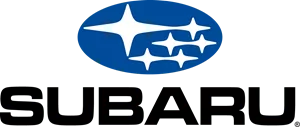Areas in Human Resources Management: Roles & Impact on Businesses
The Human Resources (HR) department is responsible for recruiting and developing a company’s workforce. It also handles payroll benefits, employee relations and training, consults with executives on strategic planning, and links management and employees.
Overall, HR management’s role is to find the best way to increase your organization’s productivity through its employees.
Now that we understand what HR professionals are mainly responsible for in the company let’s examine the HR department’s role in organizational structure.
HR Roles and Responsibilities
Role of HR: A well-coordinated organizational structure improves the flow of communication and information within your company, ensuring that you stay competitive.
Changes in company regulations, leadership, and mergers may trigger the need to redesign an organization’s structure. An ineffective organizational structure can result in workplace conflict and dissatisfied employees, so make sure to revise and update your company’s structure to maintain its functionality.
This is where the HR department plays a vital role. They can analyze and redesign the organizational structure in accordance with the company’s objectives, mission, and strategic goals.
Here are some important points HR specialists consider when redesigning the organizational structuring:
- Maintaining the effective flow of communication within the organization.
- Complying with the legal formalities.
- Providing a motivating environment for employees.
- Ensuring that the expectations and requirements of clients are met.
Understanding organizational structure and redesign brings us to the next point.
Human Resources Management Course
8 Key Functional Areas of Human Resource Management
Here is a list of the eight most important Human Resources areas:
- Recruitment and Staffing
- Compensation and Benefits
- Training and Development
- Employee Relations
- Employee Satisfaction
- Labor laws and legal compliance
- Safety and Health
- Human Resources Information System (HRIS) analysts
1. Recruitment and Staffing
Attracting and recruiting highly talented employees takes time and planning. The HR department must schedule interviews, screen, and communicate with candidates to ensure they are the right fit for the company.
This can be challenging, but fortunately, many online screening programs are available, making it much more manageable. Implementing pre-employment assessments during the interview process can help identify candidates with desired skills. For example, if you want to hire an electrician or an engineer, conducting a mechanical reasoning test will evaluate the candidate’s skills and determine the best candidate. Vendors can also assist with the application process, including screening and background checks, at very affordable fees.
2. Compensation and Benefits
Managing and establishing the compensation structure is one of the HR department’s most important responsibilities. A compensation package should include base pay plus other employee benefits, such as disability, health, dental, and life insurance. Employees’ attitudes and motivation are usually determined by how satisfied they are with their earnings.
Staying updated on current salary trends is vital if you want to attract and retain top-quality employees. That is why the HR department should be aware of and match what benefits are offered to employees in similar organizations.
Must Read: Nine Functional Areas of Human Resource
3. Training and Development
HR management is responsible for staff career development needs and training requirements. They must plan and administer training seminars and supervise team building. Effectively training employees is a major benefit for the employee and the company and is essential to maintaining high-performance levels.
The 5 main learning and development areas are:
Organizational Orientation
Welcoming and orienting new employees is an essential HR role. Examples include providing access codes, showing new hires where their workstations are, showing them how to operate the phone system, and reviewing the employee manual.
Building Innovation Teams
Job Training
All employees should have a specific job description. They must know their work hours, who they must report to, and what their job responsibilities and tasks are.
Job Interviews – Getting The Job You Want
Department Orientation
This allows new employees to get used to the area they will be working in, getting to know their co-workers and the department’s culture.
Employment Screening & Safety Orientation
Continuing Education
This is vital because job skills are constantly changing, and employees need to maintain their current skills and develop new ones. Local seminars, industry conferences, and in-house training can be utilized for this.
Career Planning
Beyond immediate skill development, effective HR departments implement career planning initiatives that map potential growth paths within the organization. Career planning aligns individual aspirations with organizational needs, showing employees they have a future with the company. This strategic approach reduces turnover, preserves institutional knowledge, and creates a motivated workforce with clear advancement opportunities.
Case Study – Coggno & Harvard Revolutionizing Training Delivery

4. Employee Relations
We all experience difficulties in our personal lives, and companies need processes in place to help employees deal with these situations and ease the stress and burden they bring to the workplace. The development and maintenance of healthy employee relations is a vital HR management function.
Employee conflict in the workplace is inevitable and happens constantly, so it is important to have proper plans in place to deal with it. Effective conflict resolution is essential for teams to work together successfully.
Remember, happy employees who feel safe in the workplace will improve your bottom line and increase productivity.
Developing And Coaching Employees
5. Employee Satisfaction
Employee satisfaction is the level of contentment and happiness employees feel for their jobs and is an essential aspect of any organization. Happy employees are productive and motivated and put in their best effort to help make the company successful.
Must Read: Making Employee Training Simpler, Faster, and More Affordable
Monitoring employee satisfaction – (there is a lot of survey software available) – can tell companies what employees experience and how satisfied they are within the organization. This is a key element that can help determine the overall health of the organization. By asking these questions, managers can learn a lot from their frontline employees and put an improvement plan in place if necessary.
Performance Management – Closely tied to satisfaction is effective performance management, which has evolved beyond annual reviews to continuous feedback systems. Modern approaches include regular check-ins, clear goal alignment with business objectives, and development-focused conversations. By establishing transparent performance expectations, providing timely recognition, and addressing improvement areas constructively, organizations create environments where employees understand their impact and feel valued. This enhances engagement while providing valuable data for strategic workforce decisions.
Increasing Employee Engagement
6. Labor Laws and Legal Compliance
Successful and healthy organizations spend money and time developing a strong HR department that supports employees and ensures that the company is compliant. This includes compliance with the Department of Labor (DOL) and the Society for Human Resource Management (SHRM).
These organizations are great sources of information for labor laws and keep businesses updated on changes within the law. An effective HR department that makes sure the company is compliant leads to happy and motivated employees, leading to satisfied customers. In the end, this ensures a successful and healthy organization!
Case Study: How Coggno Empowered Costo to Achieve Unprecedented Compliance and Safety Standards
7. Safety and Health
One of HR management’s responsibilities is to ensure that the company is compliant with the Occupational Safety and Health Act of 1970 (OSHA). According to this act, employers must provide a safe working environment for their employees.
The HR department must develop and maintain safety training and keep logs of any injuries or fatalities that might occur. Managers and supervisors must also be adequately trained to eliminate hazards from the workplace that are likely to cause injuries or death.
Safety And Health Programs Course
8. Human Resources Information System (HRIS) Analysts
The Human Resources Information System (HRIS) is used to collect and store the data of an organization’s employees. This includes the payroll, employee records, benefits, time off, etc.
HRIS analysts are IT experts who oversee computer systems, software, and databases companies use to manage their human resources. They are in charge of maintaining the system’s security by keeping the data safe, organized, and properly stored. Their duties include analyzing HRIS systems, monitoring performance, and resolving problems.
Maximize Training, Minimize Costs With Coggno Prime
They may also be required to assist HR managers and must be able to design new HRIS processes. Overall, HRIS analysts help optimize the performance of a company’s HR systems.
Must Read: The Benefits of Using Human Resource Audit Checklist
Conclusion
The HR department plays a vital role in a company’s overall success by effectively managing its employees and ensuring that the company is compliant.
Successful and healthy organizations don’t hesitate to spend money and time developing a strong HR department to support employees. This leads to content and happy workers and increases your organization’s productivity and success.
Coggno has a wide range of HR training courses.
You can have a look at our free courses here and our course catalog here.





















